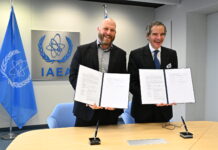In a captivating development from the island nation of Mauritius, children are participating in groundbreaking nutrition research that employs nuclear science. This initiative, depicted vividly in the accompanying photograph, forms part of a broader effort to better understand and meet the nutritional needs of diverse populations worldwide.
Understanding Energy Requirements
Energy requirements are crucial for maintaining all bodily functions, including growth and development. These requirements are essential for assessing how well food supplies can satisfy the nutritional demands of a population. They vary based on several factors, such as age, gender, physical activity, and physiological status, like pregnancy. For specific groups, additional energy needs are considered, such as optimal growth in children, tissue development in pregnant women, and milk production in lactating mothers. Accurately estimating these energy requirements involves complex calculations and poses significant challenges, especially for diverse sub-populations globally.
Historical Context and Developments
Since the 1950s, the Food and Agriculture Organization (FAO) and the World Health Organization (WHO) have worked with nutrition experts worldwide to evaluate energy requirements and derive estimates. The latest significant effort was in October 2001, which produced key recommendations for specific demographic groups. This study continued to use international calculations, first developed in 1985, known as Schofield’s equations, to estimate Basal Metabolic Rate (BMR). BMR represents the amount of energy needed for fundamental life functions, such as breathing and maintaining body temperature.
However, in the years since, a wealth of scientific evidence has emerged, questioning the adequacy and accuracy of these equations for universal application. This growing evidence base suggests that these calculations may not fully capture the diverse needs of various populations.
FAO’s 2004 Report and Recent Expert Discussions
The FAO’s seminal 2004 report on energy requirements has been a significant point of discussion among experts. A recent meeting of 15 nutrition and energy metabolism experts highlighted several developments affecting BMR. These include the alarming rise in global obesity rates, documented variations in metabolically active tissues across different populations, and trends showing a decrease in the energy needed for essential bodily functions.
The experts identified several data gaps, particularly concerning the energy needs of underrepresented populations in low- and middle-income countries (LMICs), people over the age of 90, and pregnant and lactating women. They developed a roadmap outlining the next steps in updating energy requirement estimates and suggesting areas for future research.
The Need for Updated Estimates
Francesco Branca, Director of WHO’s Department of Nutrition and Food Safety, emphasized the importance of accurate energy need estimates across different ages. “A correct estimate of energy needs at different ages is needed to plan for actions to prevent and manage different forms of malnutrition. The update may help us reconsider the design of population programmes in LMICs,” he stated. These updated estimates are crucial in addressing various forms of malnutrition and improving the design of nutritional programs in LMICs.
The Role of Nuclear Science in Nutrition Research
The use of nuclear science in nutrition research, as seen in Mauritius, represents a novel approach to understanding and addressing these challenges. Nuclear techniques can offer precise measurements and insights into body composition and energy expenditure, providing a more detailed understanding of nutritional needs across different populations.
Good to Know: The Broader Context
Understanding energy requirements is not just a matter of scientific interest; it has profound implications for public health policy and food security. As global populations continue to grow and change, ensuring that food supply systems can adequately meet nutritional needs becomes increasingly important. This research not only helps tailor nutritional interventions but also informs policies that aim to improve overall health outcomes.
Moreover, addressing the unique nutritional requirements of different demographic groups is essential for reducing health disparities and promoting health equity. The insights gained from this research could lead to more effective nutritional programs and policies, particularly in regions where resources are limited.
Future Directions and Research Opportunities
The roadmap developed by experts suggests several key areas for future research. These include exploring the energy requirements of underrepresented groups, such as older adults and women in LMICs, and investigating the impact of different environmental and lifestyle factors on energy needs. By addressing these gaps, researchers can develop more accurate and inclusive estimates that reflect the diverse needs of global populations.
Conclusion
The use of nuclear science in nutrition research, as demonstrated by the children in Mauritius, marks an exciting frontier in understanding and addressing global nutritional needs. As experts work to update energy requirement estimates, this research will play a critical role in shaping public health policies and improving nutritional outcomes worldwide. By embracing innovative approaches and addressing the unique needs of different populations, we can work towards a future where everyone has access to the nutrition they need for optimal health and well-being.
For more information, you can visit the original article on the IAEA website.
For more Information, Refer to this article.


































